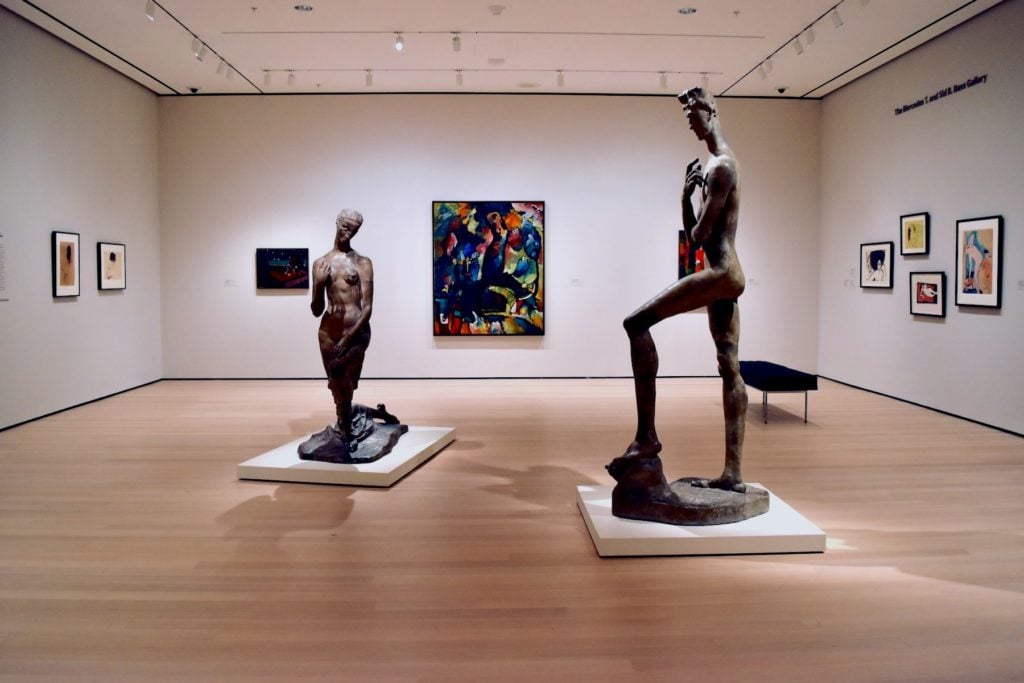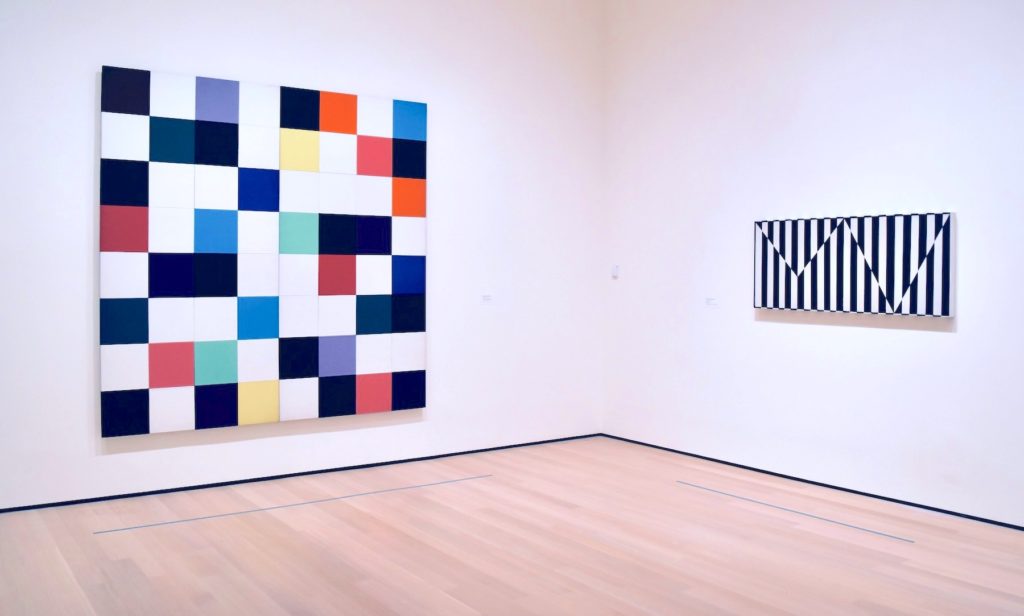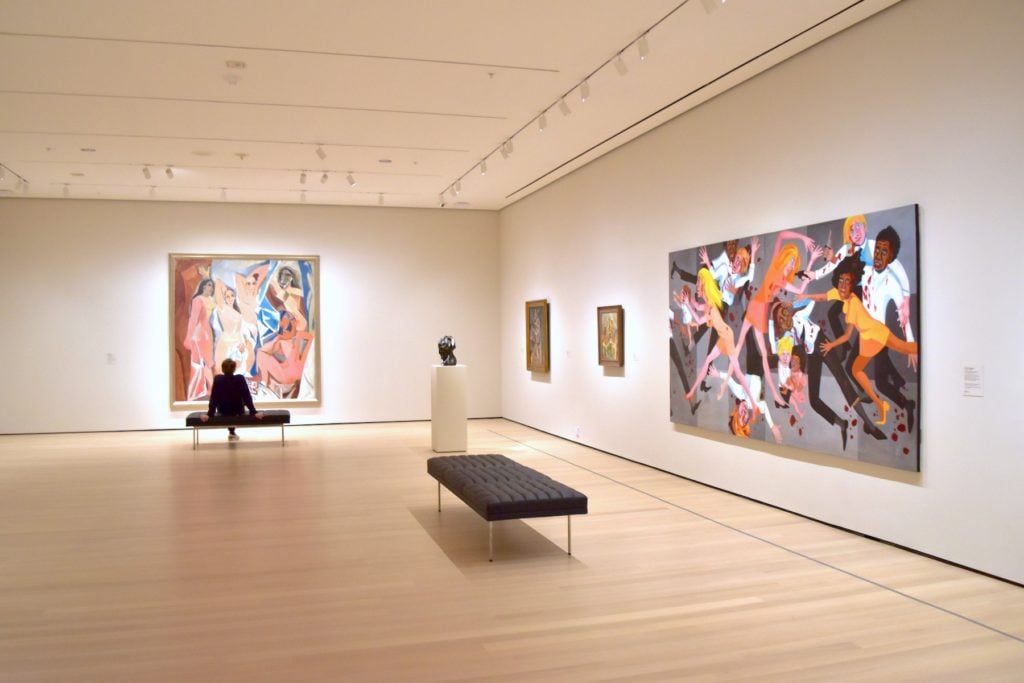On View
‘We Have to Rethink the Categories’: Curators, Scholars, and Artists Discuss MoMA’s Attempt to Open Up the Art Historical Canon
"Museums are like huge ocean liners," says the artist Fred Wilson. "They turn slowly."

"Museums are like huge ocean liners," says the artist Fred Wilson. "They turn slowly."

Melissa Smith

Had the Museum of Modern Art done 20 years ago what it’s doing now, the artist Fred Wilson imagines we would have all felt “the ground shifting underneath our feet.”
He isn’t referring only to the museum’s $450 million, 47,000-square-foot expansion and makeover, which will be unveiled to the public on October 21.
Wilson is also talking about the museum’s comprehensive reconfiguration of its permanent collection, touted as MoMA’s attempt to reshape the history of Modern art by reconsidering voices and styles it simply hadn’t prioritized in the past.
“MoMA being the holy grail, it always felt like they couldn’t make a move because they didn’t want to make a misstep,” Wilson says. “They felt they had the weight of history on their backs.”

Ellsworth Kelly, Colors for a Large Wall (1951) and Carmen Herrera, Untitled (1952). Image: Ben Davis.
That weight will not soon disappear. For a while now, critics have been questioning the standard narrative of art history, which MoMA had so much influence in defining.
“We have to rethink the categories, narratives, and even chronologies we use to talk about and evaluate artworks so that European Modernism is no longer the standard against which all other modernisms are judged,” says Ming Tiampo, a professor of art history at Carleton University.
The institution seems to have recognized these concerns, and is now throwing its weight behind other stories, while also paying close attention to how it tells them.
“We’re living in several simultaneous cultural moments,” says Adrian Ellis, a consultant for museums and nonprofits, adding that art institutions are being pulled in a number of different directions. Apart from the race towards expansion and the desire to be perceived as relevant, there is a “legitimation crisis of, ‘Why should I believe that particular curator’s narrative?’”
As MoMA director Glenn Lowry admitted at a preview of the new building, the museum had “settled into a pattern of showing work in a certain way.” Essentially, as Wilson notes, MoMA had “really clamped down on what they felt the canon was,” excluding, in particular, works by African American artists while setting in stone a seemingly single narrative.
The old MoMA’s permanent galleries argued not only that Modern art was a baton race from one artist to another—an organizing principle that often institutionalized exclusion—but also that media should be strictly separated.
But with its rehang, in which paintings share space with films, prints, and design objects, the museum has insulated itself against any expectations that a single, overarching narrative is preferable—or even achievable. Instead, the museum will rotate a third of its collections every six months, with the goal of completely rotating its current display by 2021. The point is to acknowledge that variations—global and otherwise—are central to the story of Modernism.
“We’re living in an era where the notion of ‘the modern’ has expanded to the point where it’s very porous,” says the Columbia University art historian Alexander Alberro.
One of the museum’s newly installed galleries, titled “Paris in the ‘20s,” typifies MoMA’s new approach. Alongside Pablo Picasso’s famed Three Musicians (1921) and a chess set by Man Ray, there is a work by the Brazilian painter Tarsila do Amaral.
“She was a woman who was in the thick of it in Paris in the 1920s,” says Ann Temkin, MoMA’s chief curator of painting and sculpture, noting that, until recently, do Amaral was absent from the museum’s radar. “She studied with Léger, she was friends with Brancusi.”
“In terms of the mixing and matching going on, this is a tiny microcosm,“ Temkin says. “All of the galleries in the museum now want to capture that sense of interconnection and vitality among artists from different countries who are in the same place at the same moment.”

Pablo Picasso’s Les Demoiselles d’Avignon on the left, and Faith Ringgold’s American People Series #20. Image: Ben Davis.
Embracing this kind of an integrationist approach is precisely what audiences now expect.
E. Carmen Ramos, the deputy chief curator of the Smithsonian American Art Museum, says it’s essential that curators think about how the works they oversee can be framed to broach broader narratives.
For example, “how do we look at the history of Cubism and its ties to African art through the lens of colonialism?” she asks.
MoMA, in various ways, was already making some strides in this direction.
Ten years ago, it established the Contemporary and Modern Art Perspectives (C-MAP) program to sponsor research into art histories outside of North America and Western Europe. It also recently accepted a major gift of 150 works of Latin American art from the Cisneros foundation, filling large gaps in the museum’s collection.
Ramos expects the gift to be shown “in a way that acknowledges its specificity, at the same time linking it with international currents, which is part of the history of Latin American art.”
But while the curator is heartened by MoMA’s solo exhibitions featuring underrepresented artists, which go some way in establishing local narratives, she still sees “a lot of room to grow,” especially when it comes to art from the Caribbean and its diasporas.
“If they’re taking a global perspective, they also need to think of these diasporas right outside their doors, in New York,” Ramos says.
But Temkin cautions against focusing too much on these holes, as it suggests a way of looking at art history that no longer applies.
“The idea of ‘gaps’ itself implies that there is some whole, or totality, like a jigsaw puzzle—a spot can be filled,” Temkin says. “We can never know all of the artists and all of the histories that matter.”
So how expansive will MoMA really be in capturing all these “canon-defying” ideas? Wilson is optimistic.
“As I tell people,” he says, “museums are like huge ocean liners. They turn slowly. So perhaps this is happening when it needs to happen.”